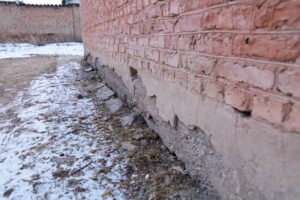Open House Red Flags Before Buying a Home
10 Open House Red Flags Before Buying a Home
If you want to get the best home possible for your family, you need to know what problems you need to look out for. As such, here are 10 open house red flags before buying a home to be on the lookout for!
A mass sale of homes in the area
The first of the open house red flags before buying a home to watch out for is a mass sale of homes in the neighborhood. If everyone is moving away for some reason, then chances are you don’t want to live there, either! It is better to look into buying a home in a different area entirely. The cause of such mass house sales can be anything from street-wide plumbing problems, flooding or other disaster concerns, or more! If you are still set on a purchase there, at least do your due diligence by researching why the sales are happening.
Obvious problems with the neighborhood
Another of the open house red flags before buying a home related to the neighborhood as a whole are, well, bad neighbors. Neighbors can make your life either very pleasant or outright hellish. For example, you do not want to get stuck living next to people who constantly argue loudly and violently. An even worse example would be neighbors who throw constant parties. You would be kept up on workdays, and drunk people are not exactly great for local security, either. You can typically spot such problems easily during an open house. Obnoxious neighbors don’t bother hiding their obnoxiousness, after all.
Rooms you are banned from
If you are actively prevented from entering a room or section of your viewing property, that’s an automatic red flag. If you’ve organized an open house event, there is no legitimate reason to keep people from accessing any part of the home. Even cited ‘privacy concerns’ hold no weight since private items or belongings should have been moved out long ago. Do not easily back down in this scenario.
Sudden onsets of weird smells
Weird smells, no matter how readily and easily we ignore them in our homes, should not be discarded. Especially if you catch a whiff of them in a bathroom, kitchen, or basement; each of these locations can hint at serious problems with the home’s plumbing and sewer systems. And you don’t want to be forced into expensive plumbing renovations immediately after buying a home!
Cracks along doors, ceilings, or walls
Cracks that develop along door and window frames, or even along the ceiling or the bottom/top of the walls, are frequently signs of a serious problem: a bad foundation. A bad or sinking foundation affects the entirety of a building. You can’t detect any serious problems, typically. However, the cracks form because the problems with the foundation cause the warping of window and door frames or even partial sinking of the floor. This can make it impossible to properly close doors and windows or set up tiles and wooden flooring. Foundational problems are also prohibitively expensive to fix, if it’s even possible to do it.
Odd home additions
It can seem odd to advocate again ‘odd home additions.’ After all, any sort of remodeling that adds whole new rooms and sections to a home is typically seen as a good thing, right? Well, that’s only the case if you are one hundred percent sure of the legality and quality of their construction. If a home’s been ‘added to over different generations,’ it also reveals its age, no matter how nice it looks. And you do not want to purchase a property for your family who is old and prone to frequently needing maintenance.
Obviously fresh renovations
Fresh renovations can be great if they are done according to code and with good materials. Here, we follow the same logic as our previous entry. If the owners rush to fix glaring issues with their property, they often cut costs and use shoddy materials. As such, you should ask for documentation on what was used and how the renovation was done. They can’t provide it, so it may be better to pass on the house.
A sagging roof
There are few open house red flags before buying a home as serious as a sagging roof. The only fix potentially more expensive than replacing a roof is fixing a home’s foundation. And a sagging roof might well force you into such an expensive renovation! This is because sagging in the roof indicates problems with rafter damage or insufficient internal bracing. That means it’s truly at risk of collapsing inwards, which would have disastrous results. Severe leaks are also a typical consequence of a sagging roof, which means it’s often smart to take advantage of the benefits of buying a home in winter since winter can be the perfect time to reveal them!
Problems with fixtures, light switches, and outlets
Oftentimes, homeowners are smart enough to cover up major problems with their homes. However, one of the common mistakes home sellers make in this scenario is forgetting to replace their outlets, light switches, and fixtures. Does a home have impeccable walls, façade, and garden but feature cracked and decaying light switches, outlets, and fixtures? Well, that’s a sure sign that everything was touched up only recently. And these elements we listed reveal the actual state of the home under its shiny veneer.
Signs of water damage
The final of the open house red flags are signs of water damage before buying a home. Water damage can hint at a whole host of problems. Roof leaks. Problems with plumbing, such as a leaking pipe. Or it can even be a sign of underground water sources leaking into a basement. Passing on a home with visible water damage is almost always smarter. Rather than invest in fixing it up and waste a ton of money.
A home safe from troubles and ready to move in
If you want a true home for your family, then you need to be on the lookout for the 10 open house red flags before buying a home. That’s the only way to avoid falling for the trap of a home that seems perfect. But it conceals all sorts of problems for you to discover once you’ve moved in instead!




